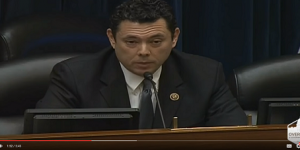THE WASHINGTON TIMES — Homeland Security Department officials say the changing face of illegal immigration and the reluctance of “sanctuary cities” to help enforce immigration laws have led to the stunning drop in deportations over the past few years.
Statistics released late Friday showed that U.S. Immigration and Customs Enforcement deported about 315,000 immigrants in fiscal year 2014, a steep drop from more than 360,000 deported in 2013 and well below the more than 410,000 the previous year.
Even more striking is the drop in the number of immigrants kicked out from the interior of the U.S. — the 11.5 million or so who dominate the debate. ICE removed 102,000 in 2014, the lowest rate since 2006, which was before President George W. Bush began to take immigration enforcement seriously.
President Obama has been searching for ways to reduce the number of rank-and-file illegal immigrants who were being deported. Hispanic rights groups argued that the high numbers had made him “deporter in chief.”
The administration now says that only about 15,000 immigrants deported last year from the interior of the country didn’t have criminal convictions, meaning the chances of a rank-and-file illegal immigrant who generally kept a clean record was less than one in 1,000.
Administration officials told reporters in a conference call Friday that they were encountering more Central American illegal immigrants, whose deportation costs were higher than those of Mexicans.
One official said this is the first time on record that border authorities have caught more non-Mexicans than Mexicans at the border, underscoring the changing demographics.
ICE, however, was unable to provide any numbers on the costs of deportation for the average Mexican versus the average immigrant from Honduras, Guatemala or El Salvador — the countries that most of the illegal immigrant children and families fled this summer.
The officials, who set ground rules that they not be identified in their briefings with reporters, also said state and local police are increasingly refusing to honor federal requests to hold illegal immigrants until agents can pick them up to deport them. Last year, they refused to hold 10,182 immigrants as requested by the federal government, they said.
“This required ICE to expend additional resources to locate, apprehend and remove criminal aliens who were released into the community, rather than transferred directly into custody,” the department said in a memo on the latest numbers. “These changes further contributed to decreased ICE removals.”
Jessica Vaughan, policy studies director at the Center for Immigration Studies, said it may cost more to deport Central Americans, but the demographics haven’t changed dramatically enough to account for the plummet in removals.
She blamed Mr. Obama’s nondeportation orders and cancellations of programs that showed results in identifying illegal immigrants who could be deported.
“The rising costs of enforcement and deportations has more to do with the policy changes that they have made, like discontinuing expedited and stipulated removal and programs like [Alien Transfer Exit Program] than it has to do with the changing demographics of the illegal alien population,” she said.
Ms. Vaughan said there is no shortage of illegal immigrants to be deported. ICE agents and officers encountered 600,000 illegal immigrants last year, she said, and more than 170,000 of them were known to have criminal records. If agents had pursued deportation in many of those cases, the number of deportations from the interior of the U.S. could have been much higher.
Administration officials have told Congress repeatedly that they had money to deport about 400,000 people a year. Legal analysts have said falling so far short of that target could be a problem for Mr. Obama as he prepares to defend his amnesty in court.
The president has argued that he is following the laws Congress wrote in deporting some people, but that he should be free to choose which illegal immigrants to deport.
Analysts, however, said falling short of the number of deportations as budgeted could be evidence that he has crossed the line from discretion to ignoring the law.
In addition to the deportation numbers, the administration has released data showing that the number of illegal immigrants caught trying to sneak into the country rose again in 2014. Homeland Security Department officials say the higher number of apprehensions suggests a higher number of people who are successfully getting through the border.
Customs and Border Protection officials said they apprehended 486,651 illegal immigrants at the border last year, marking the third straight increase and an overall jump of 43 percent since 2011.
As part of the president’s amnesty policy, Homeland Security Secretary Jeh Johnson has announced he will send more agents from the interior of the U.S. to the southwestern border, transferring efforts from rank-and-file illegal immigrants to recent illegal border crossers.
He also has announced three task forces to integrate enforcement efforts among all of his immigration branches and to improve cooperation between Border Patrol and interior enforcement agents.




























